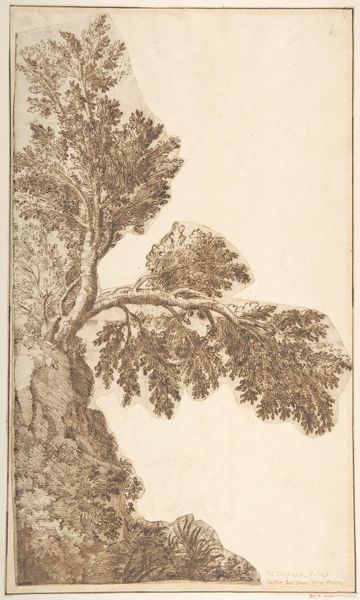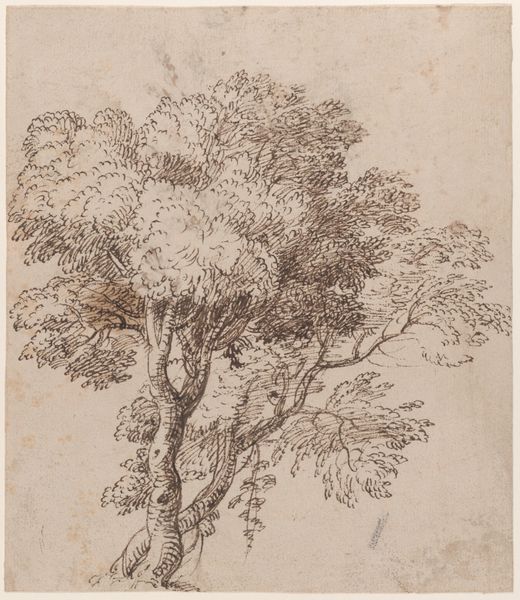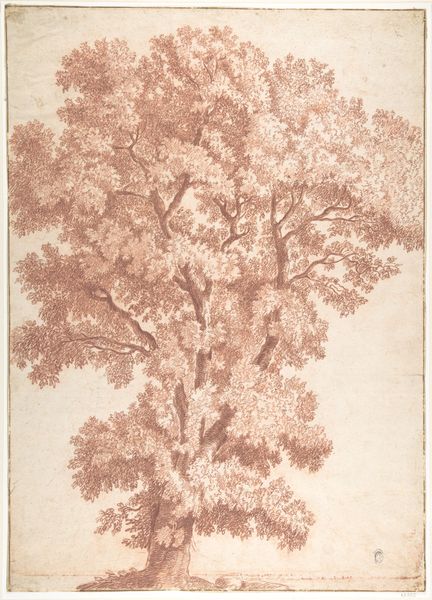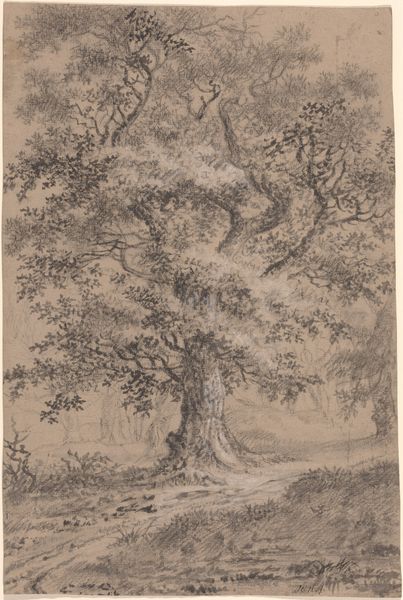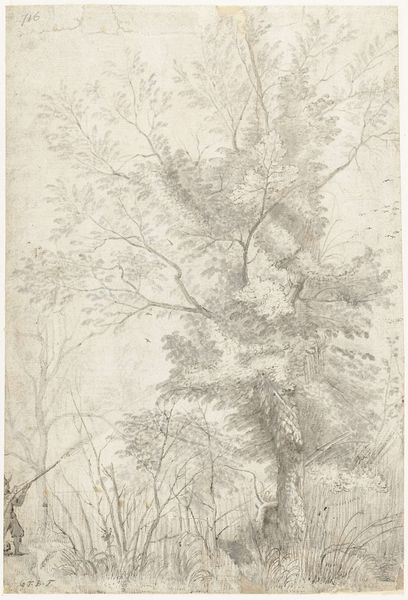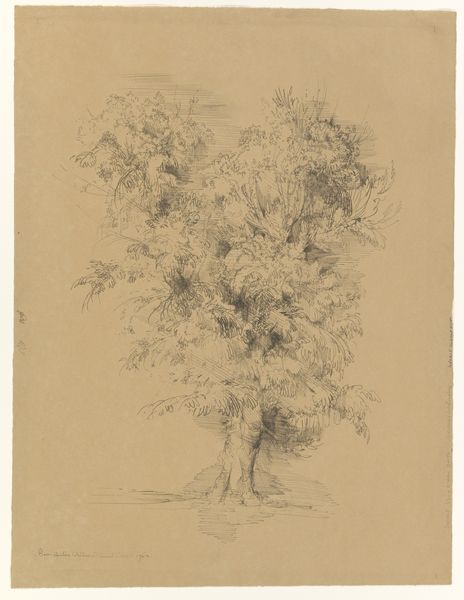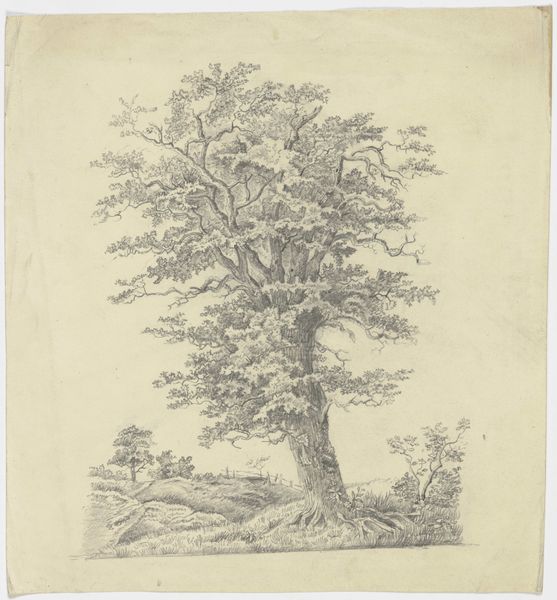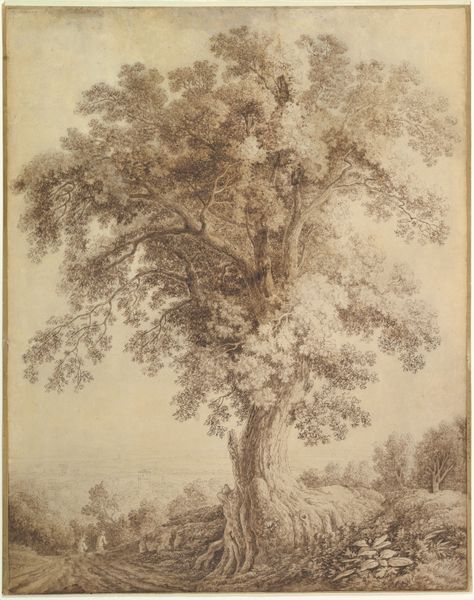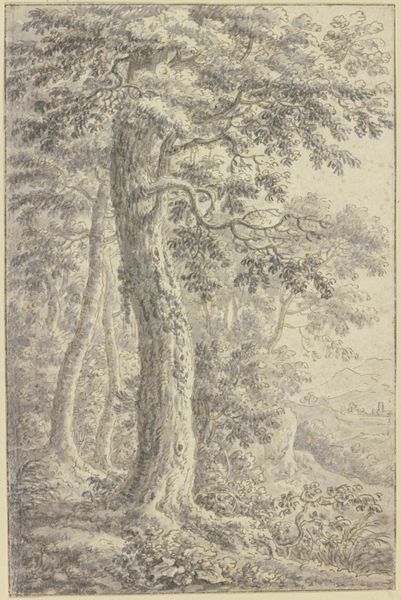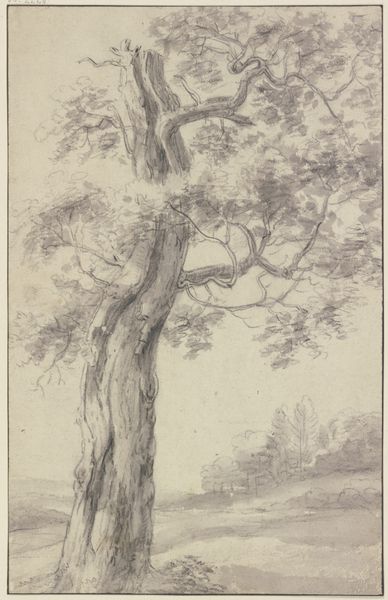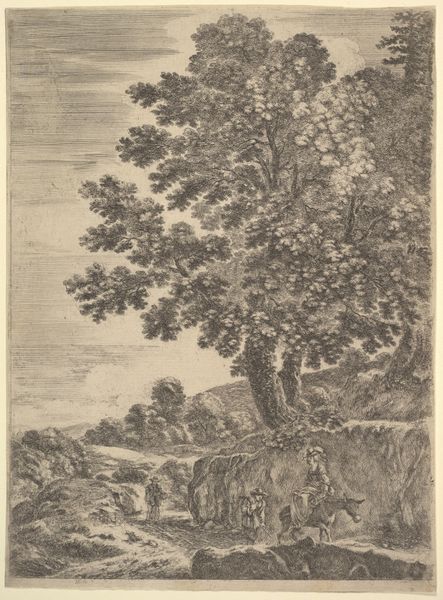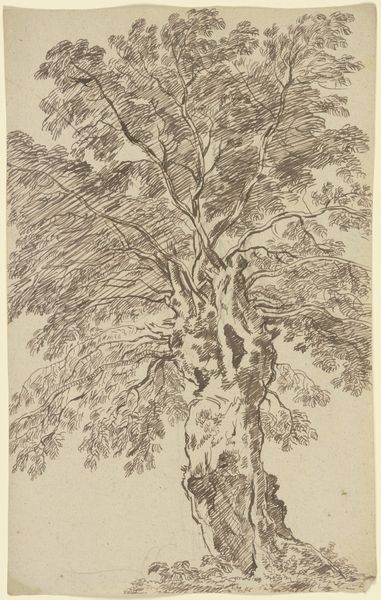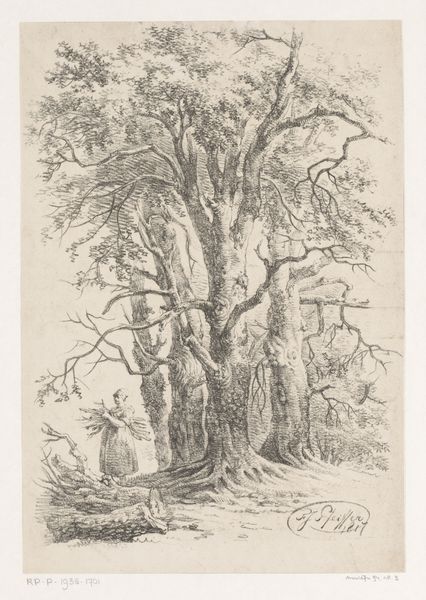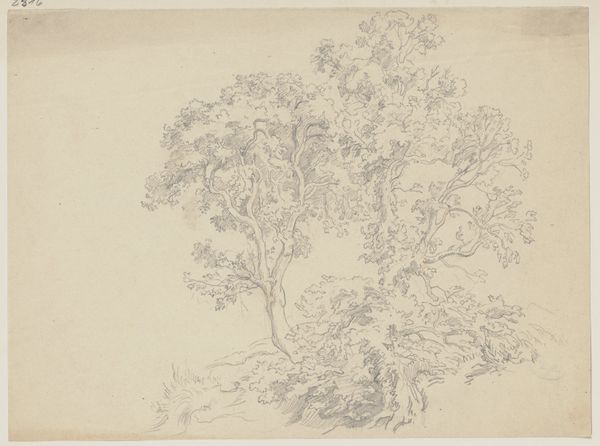
Dimensions: 13 1/4 x 8 1/2 in. (33.7 x 21.6 cm)
Copyright: Public Domain
Curator: Jean Pillement's "Study of a Tree," likely created between 1740 and 1808. It’s a pencil drawing now residing at The Met. Editor: It has a delicate and slightly melancholy mood; a rather lonely, twisting tree dominating the frame. Curator: Let's consider the materiality, then. The pencil work here is incredibly detailed, almost photographic in its realism if it wasn't also so expressive. Note the precision with which he renders the individual leaves. Editor: Yes, that intricate work is striking, yet I can’t ignore that single, seemingly unsupported tree; this could read as a critique of exploitation during periods of intense deforestation, representing a lost connection to nature—an enduring emblem of dispossession and marginalization. Curator: Perhaps, but from a formal perspective, the emphasis on light and shadow creates volume, drawing our eye from the dense root structure up toward the lighter canopy. The artist plays with texture beautifully, contrasting smooth bark with the foliage's airy quality. Editor: I agree there is skillful contrast there. But, given Pillement’s likely social location, the tree could embody a longing for a more egalitarian space. The lone tree form can be considered as a resistance to societal hierarchies represented by formal, arranged gardens of that time. Curator: Intriguing interpretation. But does seeing every artwork solely through a socio-political lens limit our appreciation for the formal mastery and artistic intention evident? Can’t the composition simply evoke beauty? Editor: It absolutely has inherent beauty, but as viewers, we are active participants; art has the capability of doing more. I am drawn to exploring its potential within conversations surrounding access and identity—who historically gets to depict "beauty" and from what perspectives? Curator: A valid point. By paying close attention to Pillement's skill in the graphite handling, while not losing sight of a context sensitive approach, we have developed a fresh awareness of what the study may have to offer in a modern exhibition space. Editor: Precisely! The interplay of formal artistry and engaged critique—revealing ever deeper, intersectional readings.
Comments
No comments
Be the first to comment and join the conversation on the ultimate creative platform.
